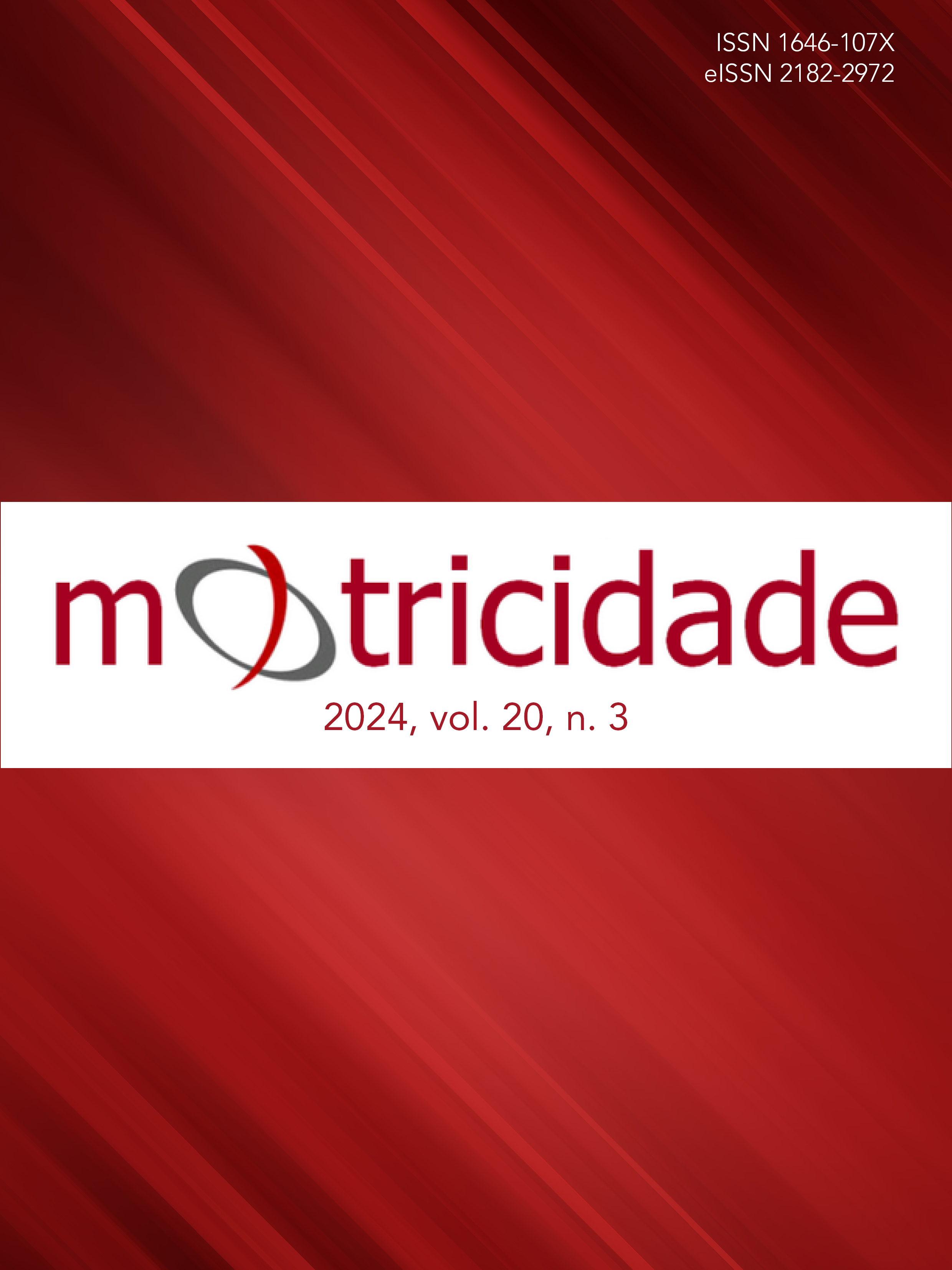Physiological responses and physical performance of advanced and novice athletes in a specific MMA test
DOI:
https://doi.org/10.6063/motricidade.29829Keywords:
Martial Arts, Psychophysiology, Sports, Exercise, Athletic PerformanceAbstract
In Mixed Martial Arts (MMA), the evaluation of athletes' performance is carried out mostly through non-specific tests. So far, there is only one specific test, the Anaerobic Specific Assessment for Mixed Martial Arts (ASAMMA). Thus, the objective of the present study was to apply ASAMMA to MMA athletes and compare their performance according to the competitive level. In the present study, 20 MMA athletes were involved, 10 advanced (ADV: 33.80±4.80 years; height 179.40±9.31 cm and 88.50±20.83 kg) and 10 novices (NOV: 34.50±5.81 years; 174.90±5.99 cm and 86.00±10.68 kg). In the first experimental session, anthropometric, resting heart rate (HR) and lactate (LA) measurements were performed. In the second session, ASAMMA was applied. Due to the physiological demand of the evaluation, ADV athletes performed three rounds, and the NOV only performed one round. At the end of each round, the following were recorded: i) HR values, ii) blood LA concentration, iii) total number of sequences performed per round and iv) fatigue index in ASAMMA. Regarding mean HR, differences were observed between groups (ADV: 167±7.27 bpm and 89.2±11.9% of maximum HR; NOV: 179±3.8 bpm and 96.3±3, 7% of maximum HR; p<0.001). After the first round, LA concentration was 15.08±2.86 mmol/L in ADV and 17.15±1.36 mmol/L in NOV (p = 0.054). Among ADV, the LA increased throughout the rounds (F(2,10) = 5.81; p = 0.0111; η² = 0.39). ADV athletes performed a higher number of sequences in the first round (71.8±7.87 versus 65.6±2.87 repetitions; p=0.003). However, in the analysis of repeated measures, a reduction in the number of sequences was observed throughout the rounds (F(2,10) = 14.37; p < 0.001). Negative correlations were found between body fat percentage and ASAMMA performance (p<0.05) and between mean HR and ASAMMA performance (p<0.01). ASAMMA can discriminate between advanced and novice athletes, both from a physiological (using heart rate as an indicator) and physical point of view, based on the number of sequences of movements.
Downloads
Published
Issue
Section
License
The authors of submitted manuscripts must transfer the full copyright to Journal Motricidade / Sílabas Didáticas Editions. Granting copyright permission allows the publication and dissemination of the article in printed or electronic formats, and copyrights start at the moment the manuscript is accepted for publication. It also allows Journal Motricidade to use and commercialise the article in terms of licensing, lending or selling its content to indexation/abstracts databases and other entities.
According to the terms of the Creative Commons licence, authors may reproduce a reasonable number of copies for personal or professional purposes, but without any economic gain. SHERPA/RoMEO allows authors to post a final digital copy (post-printing version) of the article on their websites or on their institutions' scientific repository.


